本案例利用Polyflow计算粘弹性液体和牛顿液体环形共挤流动的挤出物及界面形状。
对于粘弹性液体,选择Oldroyd-B本构模型。流体材料参数为: 
牛顿流体的粘度为10000 Poises。
1 问题描述
案例的流动几何及边界条件如图所示。粘弹性流体与牛顿流体从不同的入口进入计算区域,计算自由面及交界面。

计算模型中包含两个自由表面区域以及两个静止区域,因此计算模型包含4个计算区域,如下图所示。
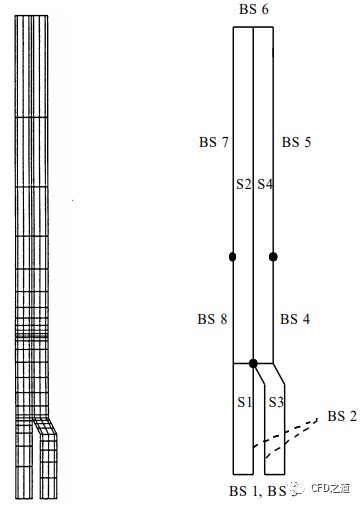
2 设置粘弹性计算域
2.1 创建Task
-
Read a mesh: coext.msh -
Create a new task:F.E.M. task,Evolution problem,2D axisymmetric

-
Create a sub-task:Differential Viscoelastic Isothermal
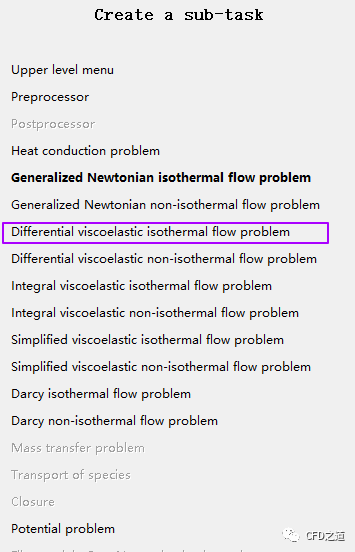
-
Domain: S1+S2
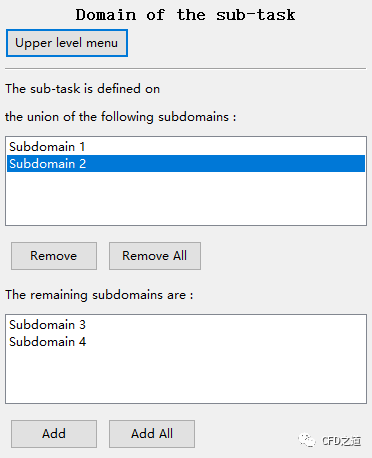
2.2 修改材料参数
-
鼠标双击模型树节点Material data打开材料设置面板
-
Oldroyd-B model :trelax = 0.1 s;visc = 10000 poises;ratio = 0.11
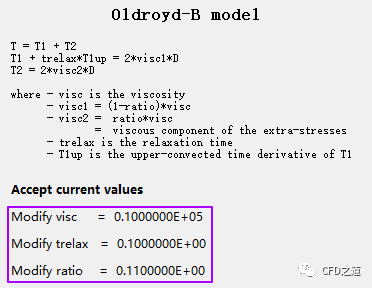
-
no density, no inertia, no volume forces
2.3 指定边界条件
-
鼠标双击模型树节点Flow boundary conditions打开边界条件设置面板
-
S4:moving interface
-
Boundary conditions
-
Position of free surface imposed on BS2
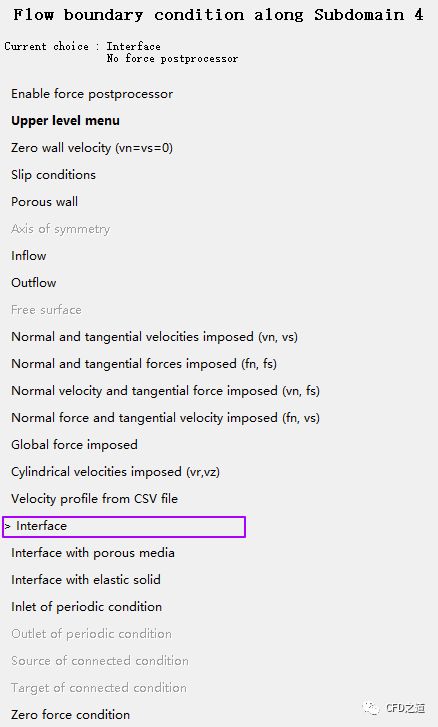

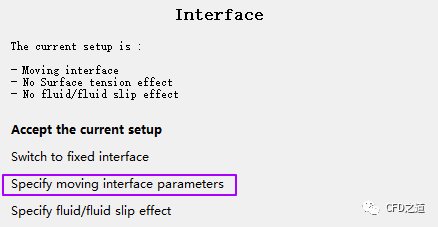


-
BS1: inflow: Q = 2 (automatic, volumetric),with EVOL on Q: f(S) = S
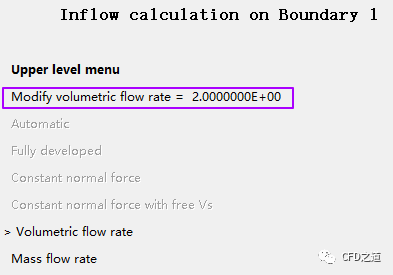
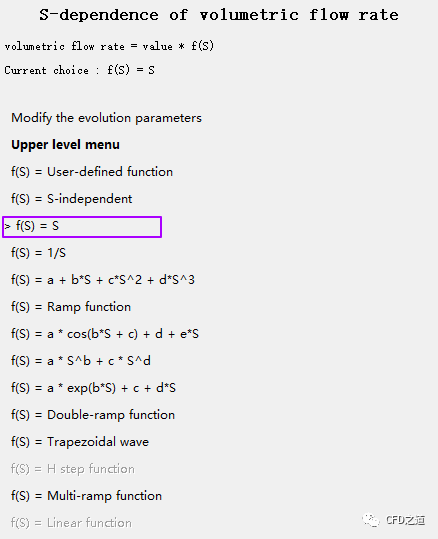
注:设置渐进的目的是为了改善收敛。
-
BS2: vn = vs = 0.0
-
BS6: fn = fs = 0.0
-
BS8: vn = vs = 0.0
-
BS7: free surface,Position of free surface imposed on BS8

2.4 指定Remeshing参数
-
鼠标双击模型树节点Global remshing打开设置面板
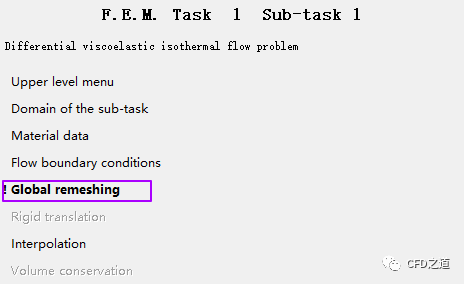
-
选择选项1-st local remeshing
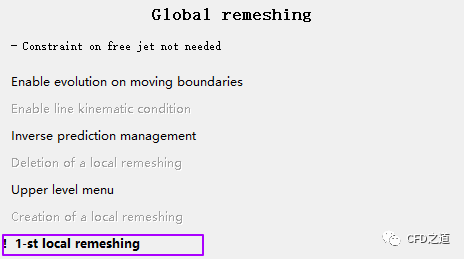
-
去除计算区域Subdomain 1
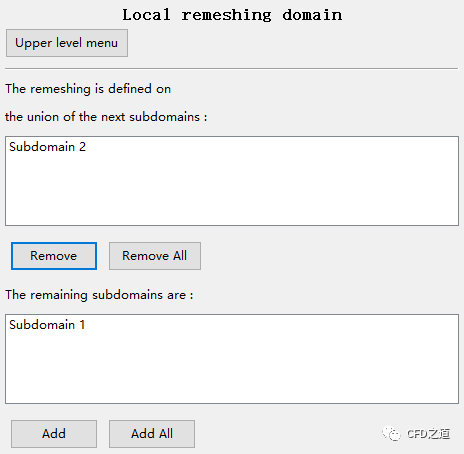
-
点击选项Method of spines

-
Inlet: intersection with S1
-
Outlet: intersection with BS6

3 设置牛顿流体计算域
3.1 创建任务
-
点击按钮Create a sub-task

-
Create a sub-task:Generalized Newtonian Isothermal flow problem

-
Domain: S3+S4
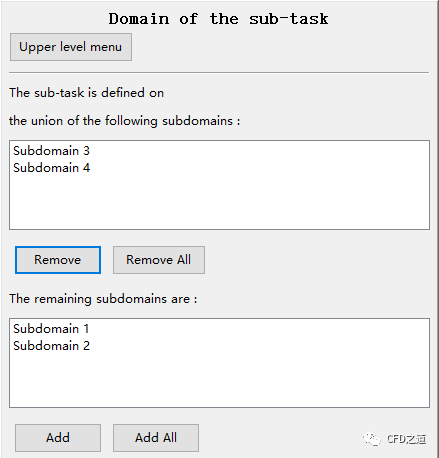
3.2 设置材料参数
-
Constant Viscosity: fac = 10000 poises

-
no density, no inertia, no volume forces
3.3 设置边界条件
-
S2: moving interface;Position of free surface imposed on BS2
-
BS2: vn = vs = 0.0
-
BS3: inflow: Q = 2 (automatic, volumetric);with EVOL on Q: f(S) = S
-
BS4: vn = vs = 0.0
-
BS5: free surface;Position of free surface imposed on BS4
-
BS6: fn = fs = 0.0
3.4 设置Remeshing参数
-
Domain: S4
-
Inlet: intersection with S3
-
Outlet: intersection with BS6
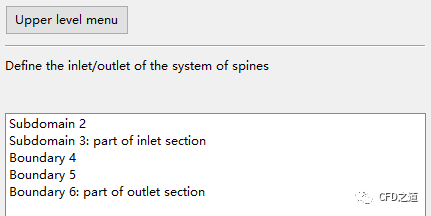
3.5 数值参数设置
-
点击模型树节点Numerical parameters,右侧面板中修改Evolution参数
-
如下图所示设置参数

4 输出设置
-
鼠标双击模型树节点Outputs,选择输出选项为CFD-Post
-
设置单位为metric_cm/g/s/A+Celsius

5 计算结果
-
速度分布如图所示
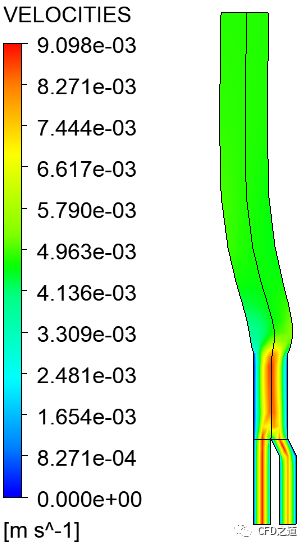
本篇文章来源于微信公众号: CFD之道








评论前必须登录!
注册